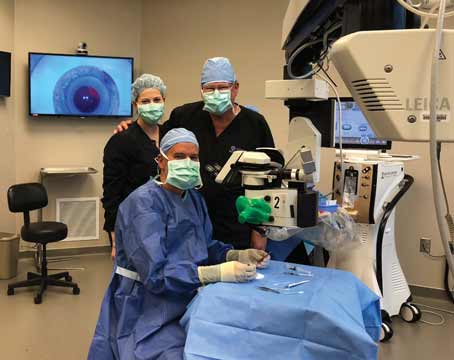So many health-care crises, so little time. And no, for once, I’m not talking about COVID. Well, maybe I am a little bit. I’m primarily referring to access to health care, specifically the staffing shortage that we were always facing but has been made acute by COVID.
Long before we cared about coronaviruses, we knew that in the years to come there would be physician shortages. I can’t say I worried about it for my own health care; it was more of a conceptual thing. But now it has become very real. It’s something we’ve all encountered, if not while trying to get to see our own doctors, but in trying to refer our patients. It’s become almost impossible. Forget the issue of getting anyone on the phone; now even online access is challenging. The problem is when you have an acute issue that requires an immediate referral you often need to talk to someone quickly and get your patient an appointment within days. Good luck with that.
The AAMC, American Association of Medical Colleges, undertakes physician workforce studies on a regular basis. Its 2021 report looked at the estimated physician shortage between now and 2034. It’s not a pretty number. It of course varies by specialty and by location, and there may be more shortages in primary care and in rural and inner city areas. No great surprises there. There’s also no surprise as to the causes: a growing, aging population; and more physician retirements. In the next decade, 20 percent of physicians will be 65 or older. Wow.
Why is that percentage so high? There are several reasons, including a 25-year cap on the number of physicians being trained. Graduate medical education is funded by Medicare, so it controls how many doctors are being trained, and a not inconsequential number of new physicians either choose to work part-time or drop out of the workforce completely—and this group has grown tremendously due to workplace dissatisfaction, career change and choosing to be a stay-at-home parent. All of these factors are at higher numbers than ever.
There have been some attempts to counter this: Congress has increased the number of training slots by 200 per year—big whoop. Improved working conditions? Not likely. One possible solution would be to select medical students who really want to work full time as a physician. (Hint: Medicine is not a hobby.)
Yes, COVID has caused many providers to decrease their patient load, and yes, COVID has caused a few providers to retire early. However, the acute difficulties I and everyone I talk to have been experiencing, even in a major metropolitan area, seem far beyond the calculated and pandemic-induced challenges. There’s clearly something else going on.
Bottom line? The world has changed in far greater ways that we could have imagined, and this is having sobering, real-world impacts on access to health care for our patients and ourselves. As physicians, we know the system and can usually get access for ourselves and our loved ones. I shudder to think, however, how everyone else negotiates securing an office visit.
Actually, I don’t have to think; I see it every day. There’s an excess of patients seeking care. This is usually a good thing, but it’s now at a level that’s straining resources and, with the employment situation being what it is, difficult to quickly address. While delays in routine care are the norm, delays in care for more emergent and serious problems are very concerning. I hope that, as COVID abates, we can address that backlog and get ahead of our communities’ needs. My fear is that we won’t. The need for care, the expectation of care, the ability to provide that care and, of course, the funding to make it happen are probably going to be out of sync for a long time to come.
I’ve only really addressed the shortage in physicians, however. Now let’s talk about the lack of nurses, home health aides, nursing home staff, etc. OK, maybe another day; I need to try get a doctor’s appointment—I think I’m feeling ill.
Dr. Blecher is an attending surgeon at Wills Eye Hospital.




